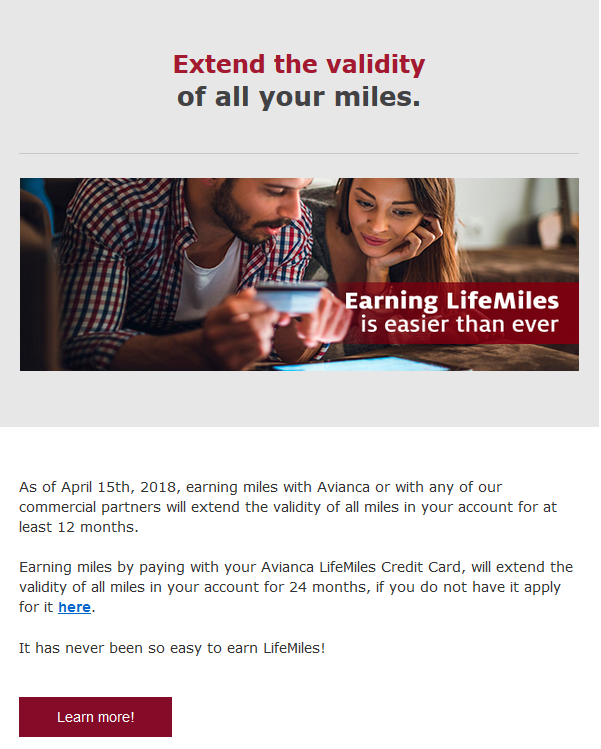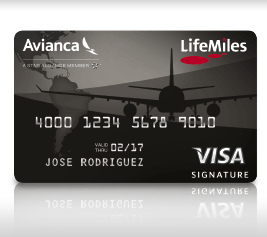Having secured my outbound flight to South Africa, I needed to figure out how to get back. My first choice was using Avianca LifeMiles because I don’t trust the program, had a substantial mileage balance, and the program doesn’t levy fuel surcharges (which are substantial over such a long distance using other programs). I was starting with 69,000 Avianca LifeMiles. 60,000 of these came from an Avianca Vuela credit card signup (so I got them for free), and the remainder came from a combination of flights credited to the program and credit card spend. Now, LifeMiles is one of the least trustworthy programs of all airlines. This is not a program you want to keep a lot of miles in, and especially not for long. Behind the scenes, LifeMiles is the spun-off (but captive) program of a financially shaky Colombian airline in the midst of a bruising management battle. They have frequently devalued points, sometimes with no notice. In fact, in between the time I booked this trip and flew (just 3 weeks later), there was another program devaluation.
Making matters worse, it’s often very difficult to redeem LifeMiles. You’ll see blogs say stuff like “it isn’t for the faint of heart” (often while trying to sell you a credit card or even worse, purchased miles), but that doesn’t actually mean anything. Here’s what redeeming LifeMiles is like in practice: The Web site suffers from frequent technical issues, so it’s often not possible to book flights that show as available. And when it does, you’re negotiating with Colombians which is like negotiating for anything else in Latin America–patience and Spanish-language ability are both a big help. Unlike with other airlines, calling in won’t help you here: telephone agents just use the Web site for you (and charge you a fee to do it) so if you can’t book it on the Web site, you can’t book it over the phone. So, although I definitely wanted to burn LifeMiles if possible, I was willing to use other miles if it wasn’t possible. As long as I was willing to return January 16th or later, there was plenty of availability in economy class using multiple programs so I was confident in attempting to book with LifeMiles given that I had more than one backup plan.
One recent change in the LifeMiles program is that they now allow mixed cabin bookings, and they also discount a business class itinerary based on the economy class legs involved. This is actually positive because most programs charge you the full business class price if even one leg is in business class. I am not entirely sure how the pricing works, but one example is it was only ~51,000 LifeMiles for a mixed cabin itinerary departing from Johannesburg to Frankfurt in economy class, connecting onward to a United flight in business class to San Francisco. I don’t really understand the logic here because if you took a flight from Europe to the US in business class it’s 63,000 points, but it’s cheaper for a longer journey if you have a leg from Europe in business class on a mixed cabin itinerary. I kept playing with the site and eventually found an itinerary that would get me back to Seattle if I was willing to fly an overnight segment in economy class, connect in Europe, and then connect again in Chicago. It wasn’t ideal but the price was right so I went ahead and attempted to book it.

Not an itinerary I was excited about–except for the price.
Naturally, the Web site choked and failed. Who knows why. It doesn’t matter. I got all the way to the end and it bombed out. This happens often. I called in, and they suggested I try again. No dice. So, I found out from the telephone agent that there is a backdoor procedure you can use with LifeMiles to book. You start by emailing [email protected] with the itinerary you want, and an explanation that you can’t book it online due to technical errors. It helps if you have screen shots of the itinerary and pricing. The LifeMiles support center will email you back a day or so later and ask for a scan of your passport. I sent them a picture. They’ll then forward it to a really friendly guy in Medellin, Colombia. A day or two later, he’ll call you up and ask if you if you still want to book. Best of all, he works directly in the reservations system, and has access to StarNet, so he can book any StarAlliance inventory that is available to partners. This is very different than you’ll normally see on the LifeMiles site, where certain partners (such as South African Airways) appear to be blocked.
He confirmed with me the itinerary I was attempting to book, but it wasn’t actually available any longer. In between the time that I had originally looked and the time that I worked through the email procedures, the inventory had disappeared. However, while we were talking, I was searching (on the United Web site, which still isn’t perfect but does a better job of showing StarAlliance inventory) and I found a better itinerary. It was business class from Johannesburg to London on South African Airways, then from London to Chicago in business class on United, and finally from Chicago to Seattle in economy class.

Still not perfect, but much better than before.
He saw the itinerary as bookable but it wasn’t appearing on the LifeMiles Web site, so here’s the craziest part: we negotiated the price! It’s 75,000 LifeMiles for an itinerary that is entirely in business class. However, since there was a leg in economy class, he agreed to discount the itinerary to 72,000 LifeMiles. This seems like around the right price based on what the site was displaying for similar itineraries, but it’s clear he just manually priced the itinerary and had the ability to charge any price that made sense. Since I had only 69,000 points, he collected $99 for the 3,000 additional points along with the roughly $101 in taxes and $25 booking fee. A couple of days later, I got an itinerary in Spanish that had a ticket number, so I called in to United and South African Airways to pick seats. I still didn’t believe that I actually had a ticket until my boarding passes printed out in Johannesburg and made sure I had two backup plans in the bag. However, the backup plans weren’t needed: the ticket was actually there.
The Economics – In A Nutshell
- My primary objective was to return in mid-January in a premium cabin on at least one long leg (preferably the Africa-Europe overnight leg), using LifeMiles, and minimizing out of pocket cost. I was successfully able to achieve this objective at an attractive redemption value.
- Some flexibility was needed. I compromised on airlines and didn’t focus on “aspirational” products. That is all academic when you’re traveling to or from a popular destination like South Africa in the austral summer and a good redemption is–first and foremost–one that gets you on a plane for free. A ticket in hand is worth far more than a dream and a points balance. Would I rather have flown back in Cathay Pacific first class? Sure, but it wasn’t available at all, and can’t be booked with LifeMiles anyway.
- Neither United nor South African Airways operate the best business class cabins in the world–not even close. However, they do offer lie flat seats on long flights, operated safely and professionally. And this is 90% of what you’re going for when you book in a premium cabin. The other 10% is the trimmings.
- I needed to be able to think on my feet. LifeMiles is a Latin American program run by people in Colombia and a patient, friendly and flexible approach to business will get you farther than having rigorous American or European expectations.
I still didn’t get amazing value for these miles, at least the way I value them. I don’t look at this as a $4,000 ticket (or a 5.5 cent per mile redemption), even though that’s what the flight would have cost in cash. Why? I wouldn’t ever have bought that flight. Instead, I look at this as a $650 ticket, because a roundtrip ticket to South Africa on my dates in economy class would have cost about $1,300 (for a decent logical routing; the cheapest terrible routing through China would have been about $1,000).
Out of pocket, I saved about $425 in cash. That’s 0.6 cents per mile. However, I got most of these miles for free, and the opportunity cost was … well, what, exactly? Another devaluation? More failed redemption headaches? Also, there is value in a business class seat, it’s just not the price the airline charges for it. Is that closer to the 1.7 cents per mile that LifeMiles charges during mileage sales? Probably. This comes in at $1,224, or around double the price of an economy class seat. For an amount of premium cabin flying that pushes 10,000 miles, that’s a pretty fair price.
Wrap-Up
I generally feel pretty good about being able to use LifeMiles for anything at all before they suddenly devalue, so I felt very good about the value I was able to achieve for them in this case. Sure, this wasn’t the world’s most “aspirational” redemption. However, nothing in this market is given the number of points I had.
 Step 6: Verify that the donation shows up in the transactions detail:
Step 6: Verify that the donation shows up in the transactions detail:





